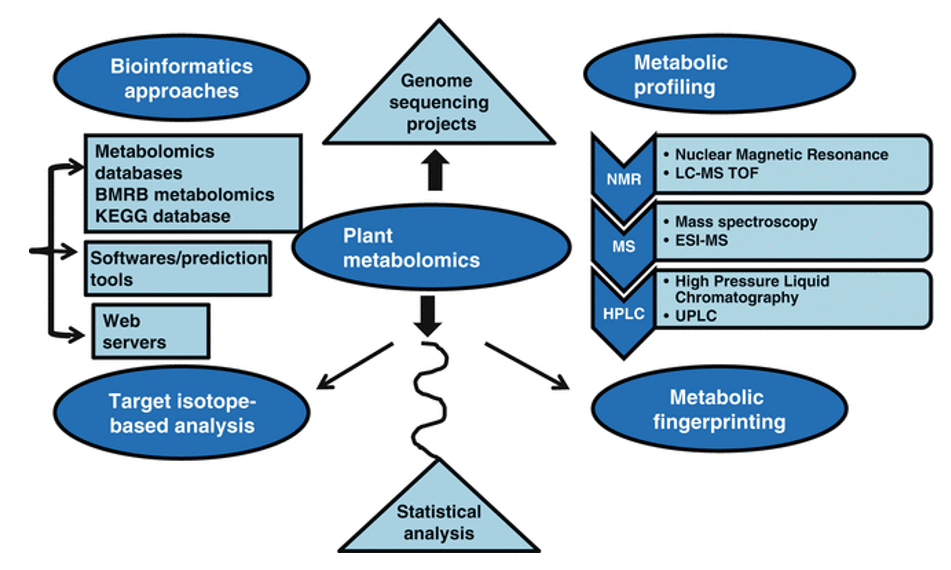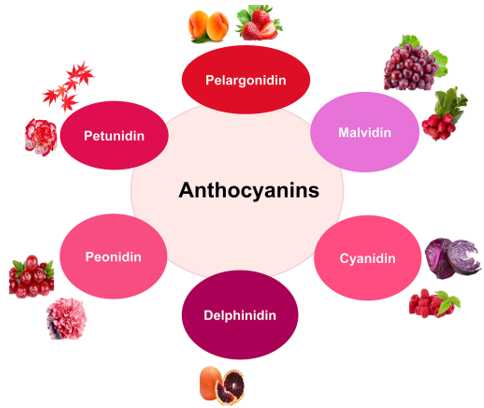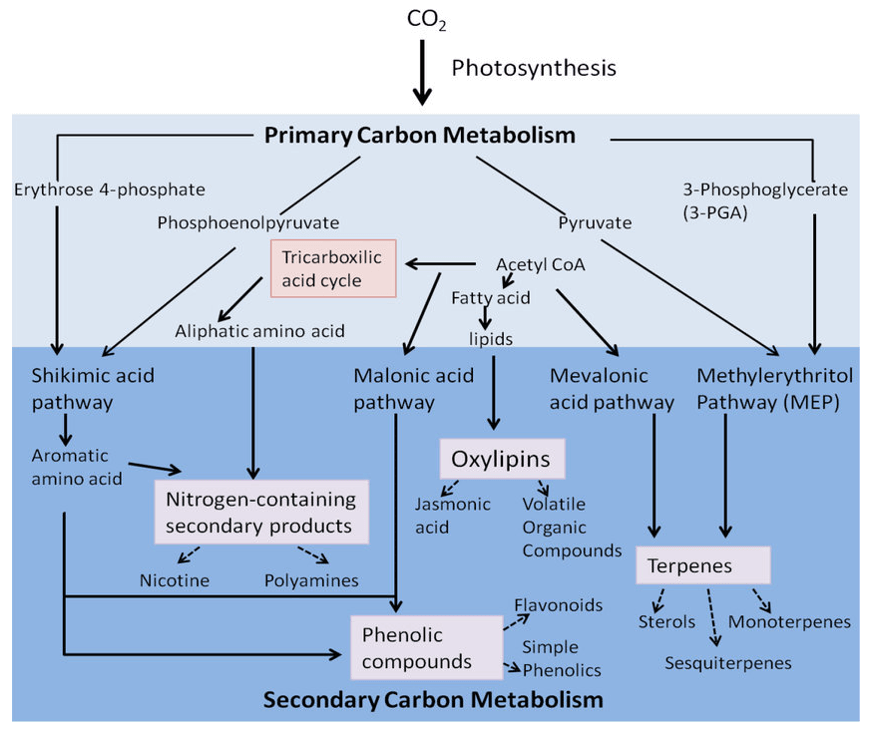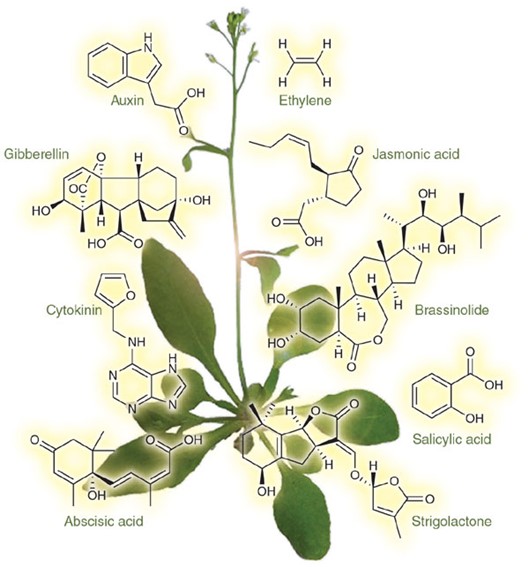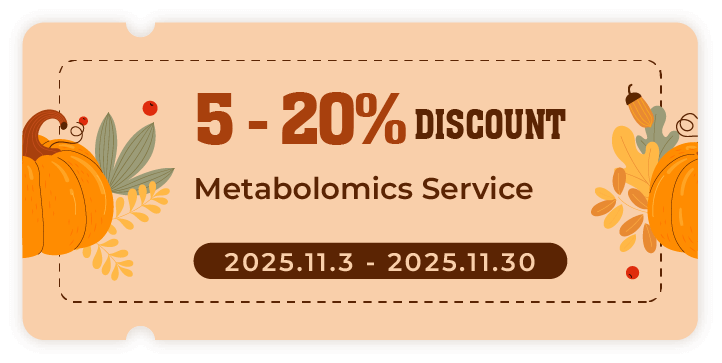Malvidin Analysis Service
Submit Your InquiryWhat is Malvidin?
Malvidin is an anthocyanin belonging to the flavonoid family and is commonly found in a variety of plants such as grapes, berries, plums and purple kale. Understanding the concentration and distribution of malvidin in different plant tissues is critical to a number of fields including biology, agriculture, food science and nutrition. Creative Proteomics can measure malvidin levels in samples and unlock the secret aspects of this compound.
In the field of plant breeding and genetics, malvidin detection helps to develop crops with higher nutritional value and desirable traits. By selecting and crossing plants with high malvidin levels, breeders can improve the color, flavor and antioxidant properties of the resulting crop.
The malvidin test can also be used in wine production. It allows winemakers to monitor and optimize the extraction of malvidin during the winemaking process. This information helps to achieve the desired color intensity, stability and overall quality of red wines.
In addition, malvidin has antioxidant and anti-inflammatory properties that may provide protection against cardiovascular disease, cancer and age-related cognitive decline. With malvidin assays, you can study the bioavailability and metabolism of malvidin to help develop functional foods and dietary supplements that take advantage of its beneficial effects.
 The molecular structure of malvidin
The molecular structure of malvidin
Malvidin Assay Service at Creative Proteomics
At Creative Proteomics, we are pleased to offer comprehensive Malvidin detection services using advanced LC-MS technology. We are able to accurately quantify and characterize malvidin compounds in complex samples, providing valuable insights into their distribution and abundance.
The following is our process for malvidin detection using LC-MS technology:
- Sample preparation: Determine the most appropriate sample preparation method based on the characteristics of your sample matrix, including extraction, purification and concentration steps to isolate the malvidin compound.
- LC-MS analysis: We use the AB Sciex QTRAP® 6500 LC-MS/MS system to isolate and detect the Malvidin compound. Liquid chromatography separation ensures excellent resolution, while mass spectrometry analysis provides precise identification and quantification of the target analytes.
- Method optimization: Our experts optimize LC-MS method parameters, such as mobile phase composition, gradient conditions and ionization parameters, to achieve optimal separation and sensitivity for the analysis of malvidin. this ensures optimal detection and quantification of the target compounds.
- Quantification and data analysis: The LC-MS data obtained from the analysis are processed and analyzed using software tools. Accurately quantify malvidin and its derivatives in your samples with specific mass conversion and calibration curves.
Targeted metabolome workflow of malvidin
Targeted metabolome studies can establish baseline metabolite levels in tissues or organisms for comparison among experiments under different conditions.
Design experiments and sample processing
Standard preparation and mass spectrometry detection,and make a standard curve
Extraction of metabolites in samples
Method verification and data quality control
Raw data preprocessing and absolute quantification of metabolites based on standard curve
Bioinformatics analysis (PCA analysis, cluster analysis, difference analysis, etc.)
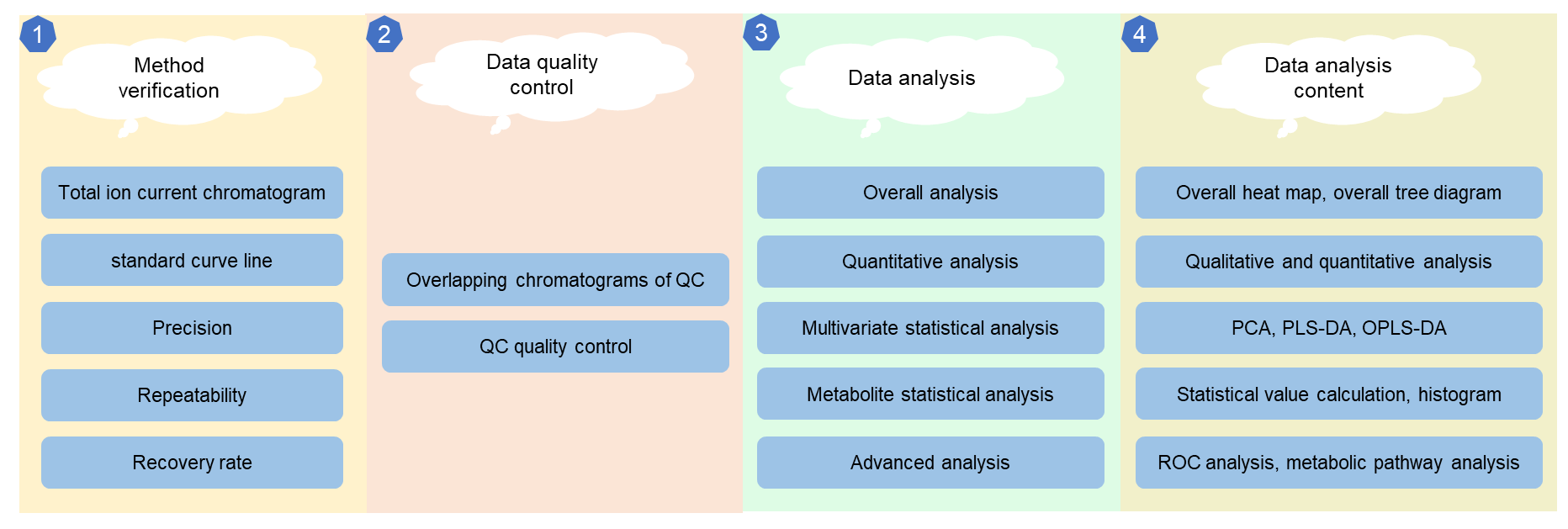
Sample Requirements for Malvidin Analysis
| Sample Requirements | Description |
|---|---|
| Freshness | Work with fresh plant samples or freeze them at -80°C for long-term storage to prevent degradation. |
| Sample Size | Use an appropriate sample size for sufficient malvidin content. Plant tissues: For solid plant tissues, such as fruit or leaf samples, a common range for sample size is around 0.5 to 1 gram. However, it is important to consider the amount of malvidin present in the specific tissue and adjust the sample size accordingly. If the malvidin content is expected to be low, a larger sample size may be required to obtain detectable levels. Extracts or juices: If working with extracted samples or juices, the sample size can be adjusted based on the desired concentration of malvidin. Typically, a volume ranging from 1 to 10 mL is used for analysis. |
| Light Protection | Protect samples from prolonged exposure to light during sample preparation, extraction, and analysis. Use amber or foil-covered containers. |
| Storage Conditions | Store extracted samples at low temperatures (-20°C or -80°C) to maintain malvidin stability until analysis. |
| Replicates and Controls | Include appropriate replicates and positive controls in the assay to assess precision, reproducibility, and validate assay performance. |
Service process

Delivery standard
- Experimental procedure
- Parameters of HPLC and MS
- Raw data, chromatograms and mass spectra
- Metabolites quantification data
- Custom analysis report





